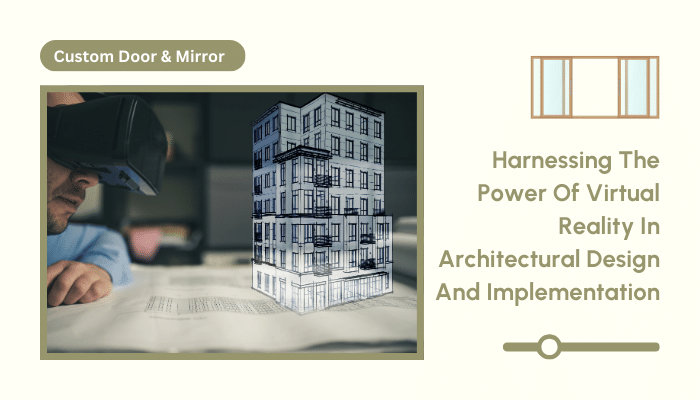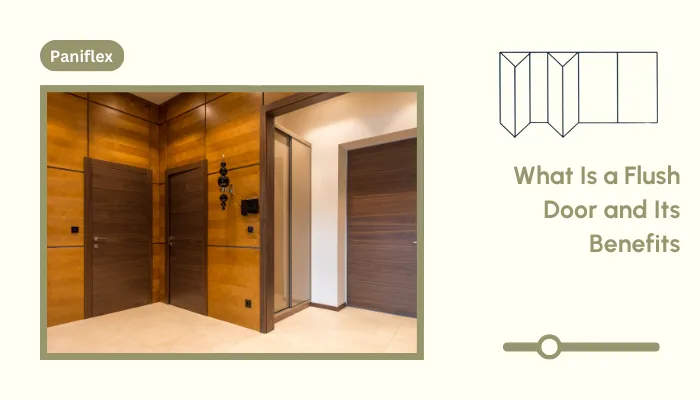The world of architecture is undergoing a profound transformation, and virtual reality (VR) is at the forefront of this change. As architects, we constantly seek innovative ways to push the boundaries of design.
VR has emerged as a powerful tool reshaping how we conceptualize, create, and experience architectural spaces. In this article, we will explore the fascinating realm of VR in architecture, uncovering its transformative potential and numerous benefits to architects, designers, students, and stakeholders.
VR’s Role in Empowering Architectural Stakeholders
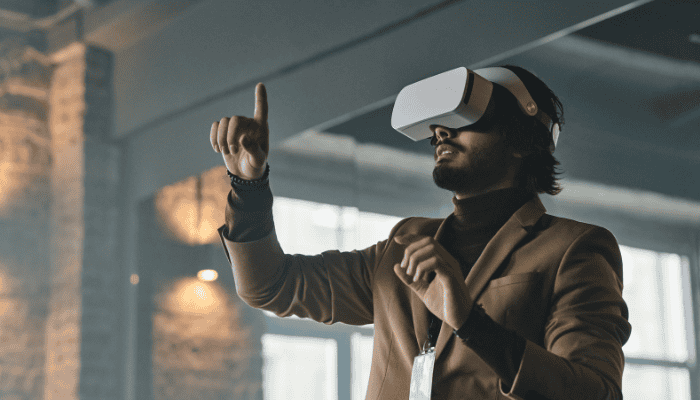
VR technology has a significant impact on empowering various stakeholders in the architectural field. For architects and designers, VR provides a platform to explore and refine their designs in an immersive environment, allowing them to make informed decisions and communicate their vision more effectively.
Students can leverage VR to enhance their learning experience, gaining practical skills and a deeper understanding of architectural principles. Moreover, VR enables stakeholders, such as clients and project partners, to actively participate in the design process, providing valuable input and feedback.
By fostering collaboration and facilitating better communication, VR empowers all parties involved in architectural projects to work towards a shared vision and achieve successful outcomes.
The Global Adoption of VR in Architecture
Now that we’ve explored how VR transforms architectural design and experience let’s see where this technology takes hold worldwide. Architectural firms across the globe have rapidly adopted VR technology in recent years.
Ready to experience the benefits of custom closet doors? Explore our range of Paniflex products now.
According to a CGarchitect survey, Europe leads the way with 40% of VR users in the industry, followed by the United States at 21% and Asia at 11%. These numbers underscore the growing recognition of VR’s potential and its widespread implementation in the field as more and more firms embrace this cutting-edge technology to stay ahead of the curve.
Understanding Virtual Reality in Architecture
Now that we’ve covered how VR empowers various players in architecture let’s break down what VR is and how it works. Virtual reality in architecture uses computer-generated, immersive environments that simulate real-world spaces.
These interactive digital environments enable users to explore, interact with, and manipulate architectural designs as if they were physically present.
Immersive Interaction with VR Headsets and Controllers
VR technology relies on specialized hardware such as VR headsets and controllers to fully immerse users in these virtual spaces. Headsets like the Oculus Rift and HTC Vive provide a stereoscopic display that creates a sense of depth and presence while tracking the user’s head movements to update the view accordingly.
Controllers, however, allow users to interact with the virtual environment, enabling them to navigate, manipulate objects, and perform various actions. These tools create a highly immersive and interactive experience beyond traditional visualization methods.
The Sensory Experience of VR
But VR isn’t just about the visuals but the complete sensory experience. Let’s touch on that next. High-quality visuals, realistic textures, and accurate lighting simulate the visual aspects of a space.
Additionally, architects and designers use music and sound effects to create an immersive auditory experience, further enhancing the sense of presence within the virtual environment. The sound of footsteps echoing in a large hall or the gentle rustling of leaves in a courtyard can add depth and realism to the VR experience.
The Advantages of VR in Architectural Design and Construction
Having understood what VR is, let’s explore how its unique capabilities benefit architectural design and construction. One of the critical advantages of VR is its ability to provide immersive 3D environments that allow for firsthand exploration and interaction with spaces and interior elements.
By immersing themselves in these virtual environments, architects can make more accurate and efficient design decisions, identifying potential issues and refining their designs in real-time.
This level of immersion goes beyond traditional 2D blueprints and renderings, offering a more comprehensive understanding of the space and its elements.
Design Visualization and Client Presentations
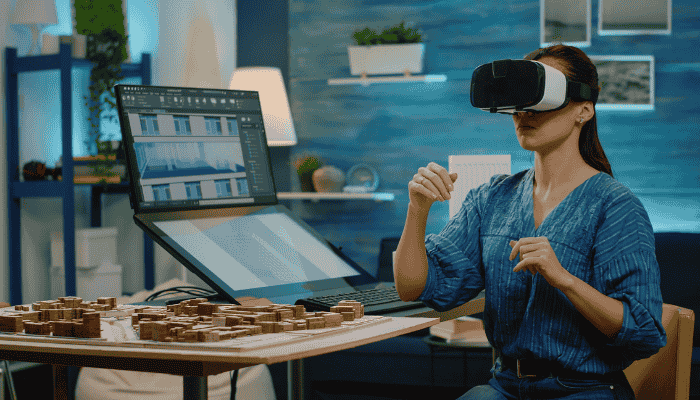
VR enables architects to create highly detailed and interactive visualizations of their designs. They can explore different design options, test spatial configurations, and experiment with materials, textures, and lighting in a virtual environment.
This immersive visualization process helps architects refine their designs and make informed decisions before moving to the construction phase. Moreover, VR revolutionizes the way architects present their projects to clients. Instead of relying on static 2D drawings or renderings, architects can invite clients to step into a fully immersive virtual representation of the proposed design.
Clients can walk through the space, interact with elements, and experience the design as if it were already built, leading to better understanding and more effective communication.
Construction Simulation and Interactive Walkthroughs
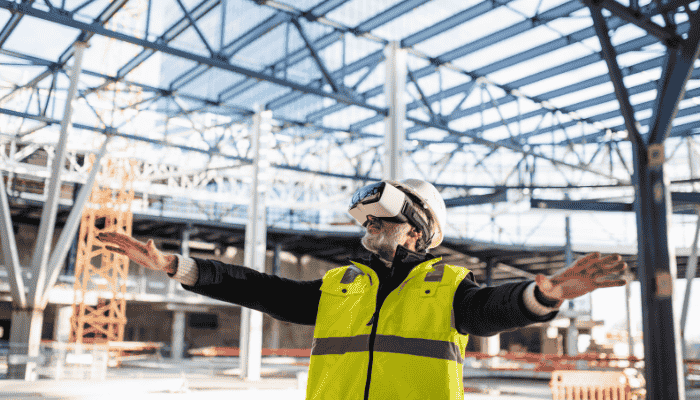
VR technology extends beyond the design phase and finds valuable applications in construction simulation. By virtually building the project in a VR environment, teams can test different construction sequences, identify clashes, and ensure smooth coordination among various disciplines. This virtual simulation helps minimize errors, reduces rework, and improves project efficiency.
Furthermore, VR walkthroughs provide an immersive and interactive experience for clients, stakeholders, and the public to explore architectural designs. Users can navigate through the virtual space at their own pace, examining details and experiencing the flow and functionality of the design, enhancing engagement and understanding.
Collaborative Design in Virtual Environments
VR platforms enable architects, engineers, and other stakeholders to collaborate in real-time, regardless of their physical location. Teams can meet in a shared virtual environment, discuss design ideas, make modifications, and provide instant feedback. By leveraging VR for collaborative design, architectural firms can foster effective teamwork, share expertise, and deliver projects more efficiently. This collaborative approach streamlines communication, facilitates faster decision-making, and ensures all team members are aligned throughout the design process.
Ready to experience the benefits of custom closet doors? Explore our range of Paniflex products now.
VR vs. Traditional 3D Walkthroughs
So, we’ve seen how VR reshapes design and construction; next, let’s compare it with traditional 3D walkthroughs. Ready to chat about how VR stacks up against more traditional methods? Let’s dive into that. While 3D walkthroughs visually represent a space, VR takes it further by providing a fully immersive, first hand experience. In VR, users can interact with the environment, move freely within the space, and experience it as if they were physically present, surpassing the level of immersion achieved through traditional 3D graphics. However, it’s essential to consider the cost and accessibility aspects of VR compared to conventional methods. Implementing VR may require additional hardware, software, and training investments, impacting its adoption and widespread use.
Elevating Architectural Design with VR
Having seen the comparison, let’s focus on how VR enhances various aspects of architectural design. VR streamlines the architectural design process by enabling real-time collaboration among team members, regardless of their physical location. This collaborative approach facilitates effective communication, idea sharing, and swift decision-making, ultimately leading to more efficient project delivery. Moreover, VR allows architects to spot errors and facilitate early feedback for error correction. By immersing themselves in the virtual environment, architects can identify potential issues, such as spatial conflicts or accessibility problems, that may not be apparent in 2D drawings or 3D models. This early detection enables timely corrections and refinements, saving time and resources in the long run.
You can only elevate your designs when your foundations are strong. Make your basics fool-proof.
VR in Architectural Presentations
Interesting, right? Now, let’s discuss how VR is enhancing architectural presentations. VR is revolutionizing the way architects present their projects to clients.
Architects can showcase their vision more compellingly and engagingly by providing clients with a virtual walkthrough of the proposed design. Clients can fully immerse themselves in the architectural design during VR presentations, experiencing the space as if it were already built.
This immersion allows clients to understand the intricacies of the design better, appreciate the spatial relationships, and provide more informed feedback. As a result, VR presentations foster improved communication and collaboration between architects and clients, leading to higher satisfaction and faster project approvals.
The Role of VR in Architectural Education and Skill Development
Speaking of immersive experiences, VR also waves in architectural education and skill development. Let’s touch on that. VR technology offers new opportunities for students and professionals to explore and learn from various architectural designs, styles, and techniques. They can immerse themselves in virtual environments to better understand spatial relationships, materials, and construction methods.
Acquiring VR Skills for the Future
Because VR is becoming increasingly prevalent in the architectural industry, students and professionals need to acquire the necessary skills to leverage this technology effectively.
Educational institutions offer courses such as ‘Virtual Reality for Architects’ or ‘Immersive Design Studio,’ equipping students with the knowledge and skills to create compelling VR experiences.
The industry ensures a workforce prepared to embrace and leverage this transformative technology by encouraging students and professionals to acquire VR skills through these courses.
Practical Considerations: Cost, Time, and Implementation
Now that we’ve unpacked educational impacts, let’s consider some practical aspects, like cost and time. Architects face specific cost implications when they implement VR technology in their projects. Compared to traditional architectural animations, VR may require additional investments in hardware, software, and specialized skill sets.
However, it’s crucial to consider the long-term benefits and return on investment, as VR can streamline the design process, reduce errors, and enhance client engagement.
When compared to traditional methods, VR may have higher upfront costs, but the potential for improved efficiency, faster decision-making, and enhanced client satisfaction can offset these initial investments.
Time Considerations for VR Projects
The time required to develop VR experiences can vary depending on the complexity and scale of the project. Simple VR walkthroughs may have shorter timelines than more intricate and interactive experiences. Architects should consider factors such as the level of detail, the size of the virtual environment, and the number of interactive elements when estimating the time needed for VR projects. While VR development may require additional time upfront, it can ultimately lead to time savings throughout the design and construction process by facilitating better communication, reducing errors, and streamlining decision-making.
Ready to experience the benefits of custom closet doors? Explore our range of Paniflex products now.
Estimating VR Project Costs and Timelines
Architects should collaborate with experienced VR developers and consultants to obtain precise project estimations for VR implementations. These professionals can assess the project’s specific requirements, considering factors such as interactivity, visual fidelity, and desired features. They can provide detailed cost breakdowns and timelines, helping architects make informed decisions and plan their budgets accordingly.
Architects typically involve defining the project scope, identifying the necessary resources, and considering the complexity of the VR experience during the estimation process. Factors such as the size of the virtual environment, the level of detail required, and the number of interactive elements will impact the overall cost and timeline.
Open communication and clear expectations are essential for a successful VR implementation.
The Future of VR in Architectural Design and Implementation
Let’s move on to how VR is set to shape the future of architectural design and implementation. As VR technology evolves, it opens up new possibilities for architectural design visualization and stakeholder engagement. Advancements in hardware and software will enable even more realistic, immersive, and interactive VR experiences.
Architects will be able to create highly detailed and dynamic virtual environments that closely resemble the final built product, enhancing stakeholder engagement and allowing clients, investors, and the public to understand and appreciate the design intent fully.
Unlocking New Possibilities in Design Visualization and Stakeholder Engagement
Architects hold immense potential for unlocking new possibilities in design visualization and stakeholder engagement as they adopt VR in the future. As technology advances, architects can create even more realistic and immersive virtual environments that closely mimic the real-world experience.
This enhanced level of realism will enable stakeholders to fully grasp the intricacies of the design, from the play of light and shadow to the texture of materials.
Moreover, VR will facilitate more interactive and collaborative design processes, allowing stakeholders to shape the outcome actively actively. By providing a real-time feedback and decision-making platform, VR will streamline the design process and ensure that all parties are aligned throughout the project.
Embracing the VR Era in Architecture
Let’s glimpse the future and see how VR will evolve in architecture. Architects can differentiate themselves from competitors and create a lasting impact on potential clients by offering immersive VR experiences.
VR walkthroughs and interactive presentations can help clients visualize the proposed design in a way that traditional methods cannot match, leading to increased client satisfaction, faster project approvals, and long-term customer loyalty.
As VR becomes more accessible and affordable, it will become a standard tool in the architect’s arsenal, unlocking new opportunities for design exploration, client engagement, and project success.
The Role of VR in Selling Projects and Building Customer Loyalty
As VR technology becomes more sophisticated and widely adopted, it will play a crucial role in selling architectural projects and building long-term customer loyalty.
By leveraging VR, architects can create compelling and immersive presentations that persuasively showcase their designs. Clients will be able to experience the proposed spaces as if they were already built, making it easier for them to envision themselves inhabiting those environments.
This heightened engagement and emotional connection can be a powerful tool for securing project approvals and building client trust. Furthermore, architectural firms can differentiate themselves from competitors and establish a reputation for innovation and customer-centricity by consistently delivering exceptional VR experiences, leading to increased client retention and referrals.
Conclusion: Embarking on the VR Journey in Architecture
Virtual reality has emerged as a transformative force in architecture, reshaping how we design, collaborate, and experience architectural spaces. VR offers many benefits and applications, from immersive design visualization and engaging client presentations to collaborative workflows and educational opportunities.
As architects, embracing this technology and exploring its potential to enhance our practice is crucial. By leveraging VR, we can push the boundaries of design, deliver exceptional projects, and stay at the forefront of the industry.
The future of VR in architecture is bright, and it is up to us to harness its power and shape the built environment in innovative and captivating ways.
By embracing VR and continuously adapting to technological advancements, we can unlock new possibilities, engage clients more effectively, and create inspiring and transform architectural experiences.

